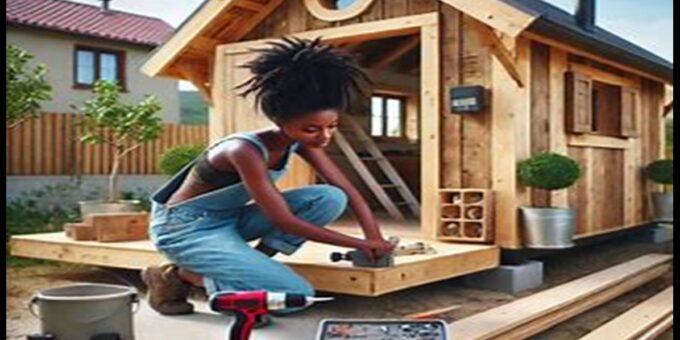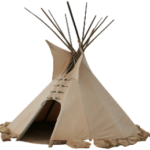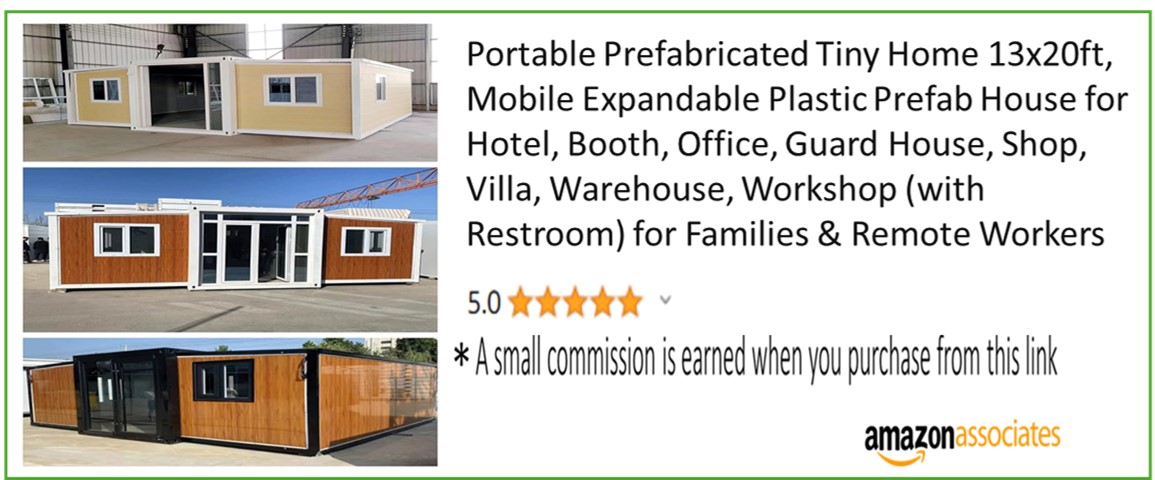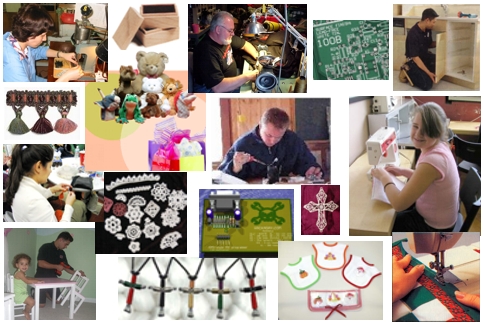
Although the tiny house movement is not a new trend, the 21st century has witnessed a remarkable surge in the popularity of the purchase or DIY building of the modern tiny home, revolutionizing the way we utilize our living spaces. This movement is fueled by a desire for simplicity, sustainability, efficient use of resources, and the fact that the housing market is becoming too expensive. Just check out some of the most popular YouTube channels to understand how some influencers are showing the world how to build tiny homes and their cost effectiveness, compared to the ever-growing and high-priced housing market. But before you jump head first on this bandwagon trend, you should consider the pros and cons of owning a tiny home. Let’s delve into the fascinating movement of the ‘Tiny Home’ living craze and consider all the guidelines for making this trend your new reality.
What size is considered a tiny house?
Generally speaking, a home is considered tiny if it is 400 square feet or smaller. This number can be even smaller in some areas, with minimum square footage required as low as 200 square feet. So, if you are considering building a tiny home, aim for that compact size to fit the tiny house lifestyle.
Tiny Home Movement
The modern tiny house movement is believed to have started in the 1970s. During this time, artists like Allan Wexler began exploring the concept of contemporary compact living. However, the roots of tiny homes date back even further. Let’s take a journey through time to explore the evolution of the tiny home. Here are a few interesting facts about the Tiny House Movement.
1. 1854- Henry David Thoreau published his book “Walden” after living in a 150-square-foot tiny cabin near Walden Pond. This influential work may have sparked the giant tiny house movement we see today.
2. 1000 BC- Yurts (or “Gers”) originated in Mongolia. These practical and mobile homes could be disassembled and reassembled anywhere, making them adaptable to weather conditions. Yurts are waterproof, heat-resistant, and well-insulated.
3. 500 BC- Tipis (or Teepees) have been around for centuries. They are portable, conical tents used by indigenous peoples in North America. Tipis are versatile and can be easily set up and taken down.
4. 1940- Buckminster Fuller introduced the Geodesic Dome, a unique architectural structure. His residential geodesic dome, built in Carbondale, Illinois, was one of the first of its kind.
5. 2012- Second Wind Cottages established a tiny house village in Newfield, New York, with 18 tiny homes completed so far to help restore lives.
6. 2014- The city of Spur, Texas, became the first tiny house-friendly city. Residents legally live in tiny homes, embracing simplicity while reducing their environmental footprint.
7. Current- Even New York City’s smallest apartment is 55 SqFt!
Consider these questions to ask yourself, before purchasing or building a tiny home
Do you have land to place your new home? Although industries like Home Depot and Amazon allow you to purchase a prefab home online and have it delivered to you, you must consider whether or not you have the space for it. The first step is to have your land in place either by way of purchasing or you already have it through an existing property. How disappointing it would be to excitingly buy your first tiny home only to have to return it because you have no land.
Do you understand your city and state’s laws and guidelines for placing or building your home on said property? The ideal scenario is to build your tiny home with unlimited space. But that’s not the case. Most cities have zoning guidelines that require the width and height of your tiny home to be certain square footage to pass the city’s inspection for the proper permits. You must also consider the electric installation, plumbing, and heating (that includes a small boiler and or furnace). Last, is insurance; especially if you live in a flooding, fire, or tornado-prone area.
How do you plan on using your tiny home now and in the future? Yes, the question is stated correctly. I’m speaking on longevity. Did you know that we still have homes that were built in the 17 and 1800s? maybe even longer; I’m sure of it. These grandpa homes were passed down from generation to generation. They are holding up stronger than a mountain (just a little exaggeration of course) but you get my drift. With occasional repairs, these homes could last another hundred years or two. When dealing with a DIY home or pre-fabricated ordered home, you have to consider the longevity. Would your tiny home stand bad weather? Can it last past the changing zoning laws in your city? Can you transport your home in an emergency? Can your home hold up your growing family? And last, can your tiny home handle you as an elderly person? I guess it all depends on your intentions with your tiny home, whether it’s for short or long-term usage. Finally, can you pass this DIY home down to the next generation? If you can answer these questions with a positive answer, then by all means enjoy. But if you have more doubts than positive outcomes, you may consider purchasing a smaller traditional home or a fixer-upper that may last generation after generation.
Additional Reasons for Alternative Housing 
On a side note, our rising housing market has forced some Americans to find alternative means of living. There has been an increase in citizens losing their homes because they could no longer afford rent. After the pandemic and the rent moratorium, landlords could start processing evictions. Tenants were required to pay what was owed or move. Although there were services available to some, there wasn’t enough rental assistance for everyone. This helped the tiny house movement craze to peak. Below is a list of alternative living situations people use to keep themselves sheltered.
1. Learning how to build tiny homes.
2. Living in RV homes.
3. Converting old trucks into homes
4. Converting old shipping containers into homes.
5. Converting school buses into homes.
6. Converting or situating their car or full-size van as a home.
7. Living in mobile homes.
In summary, the tiny house movement represents a departure from traditional notions of housing, emphasizing simplicity, affordability, efficient use of space, and ultimately learning how to downsize our lifestyles. Whether you’re intrigued by minimalist living or drawn to innovative designs, tiny homes will continue to influence how we live in the 21st century and beyond!
If you want to learn more about Amazon Pre-Fab Home options, click the link below.
Resources
- How I Built A Tiny House DIY Full Exterior Build Pt-1. https://www.youtube.com/watch?v=fePj1aY5CKQ
- How I Built A DIY Tiny Home Gym Interior…. Pt-2. https://www.youtube.com/watch?v=5y8ZSN429rU


















Comments